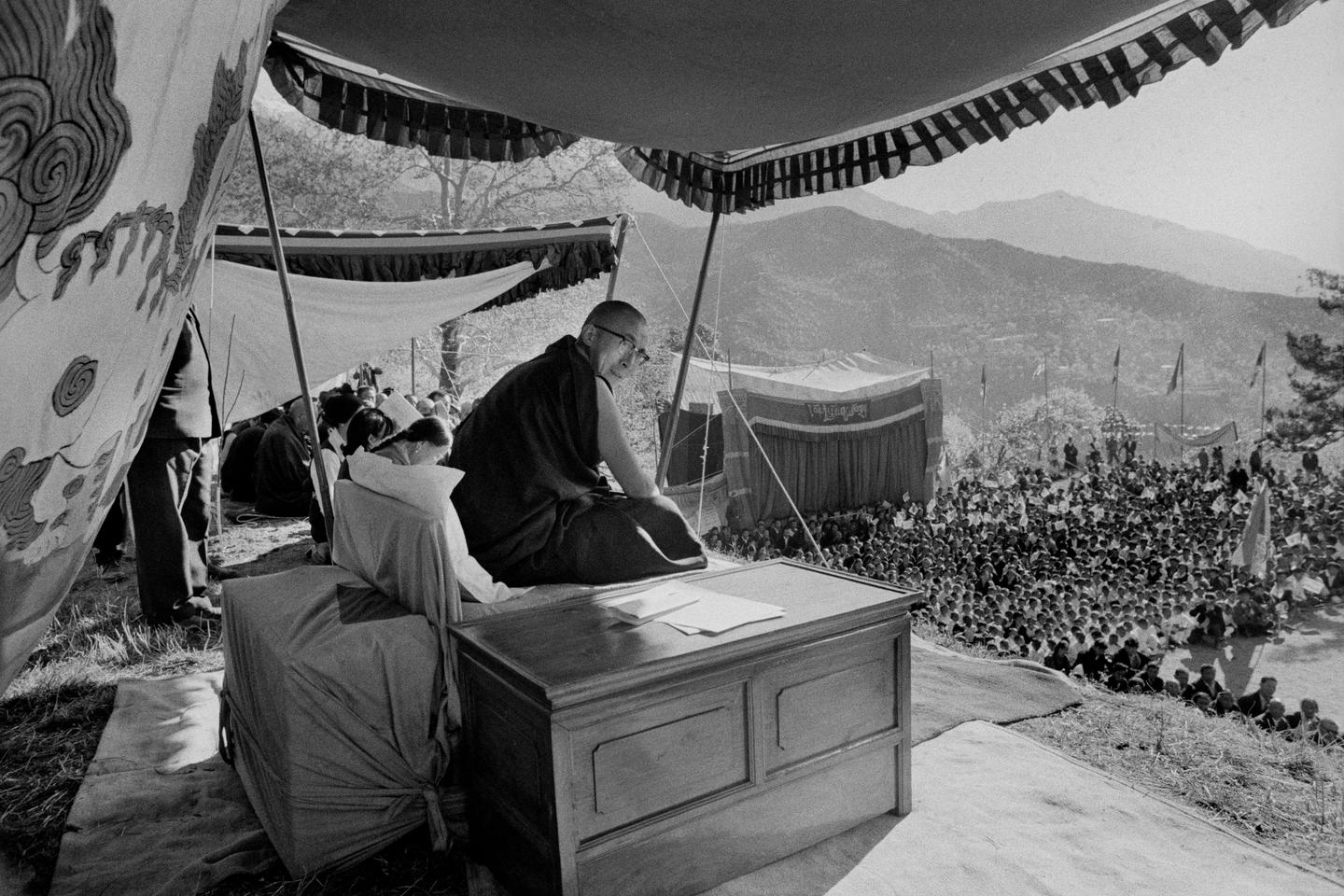Past the great The Potala, the thousand-room palace where he lived until 1959, to the Indian residence where he lives today, the Dalai Lama didn’t just change countries: he changed the world. However, there is one thing that connects these residences and it matters: in Dharamsala, a city in the Himalayas where he took refuge sixty-three years ago to escape Chinese occupation, the spiritual leader of Tibet dominates the city, just as Lhasa once did from his apartment. In both cases, there is an air of mystery around this lofty square, surrounded by walls and designed to accommodate this 88-year-old man whom his compatriots also call the “Ocean of Wisdom”.
For the rest, exile brought home Tenzin Gyatso, 14e Dalai Lama, with proportions far removed from past splendor. Built in the early 1960s, the building is concrete, cubic and yellow in color. You can barely see their green roofs, drowned in a forest of pine and rhododendrons. About lingkhorThe , a prayer path that winds below, is charming but looks like a footpath, compared to the 8 kilometers that Lhasa had before it was destroyed by Chinese invaders. Flags, prayer scrolls, colored stones, votive altars, everything here is a smaller, more tacky recreation of what existed on the other side of the mountains.
Despite its simplicity, this place is the heart of the exiled Tibetan community. The sanctuary where the children of this lost land have built a city, but also a life: far from the land of their ancestors, but close to the one they regard as father and almost godlike. In McLeod Ganj, the upper part of Dharamsala where the Tibetans live a year after their escape from their home country, in early 1959, the face of the man whom their co-religionists also nicknamed “The Presence” was everywhere. Shop, apartment, restaurant or office, the visitor cannot take a step without finding himself face to face with his smiling portrait bounded by a ritual shawl, the khata of white silk.
“We walked for a year and a month”
He, on the other hand, was never physically visible on the steep streets of McLeod Ganj where, after all, his old age and osteoarthritis of his knees would have prevented him from walking. However, everything in this massive city of 11,000 souls seems to revolve around the man and even live by him: he is a craftsman and a protective figure, the man whose influence has drawn thousands of refugees, pilgrims, the curious and celebrities who come to see him. Who without whom that place would probably still be the nameless small town it was before he arrived.
You have 86.74% of this article left to read. The following is for subscribers only.

“Twitter junkie. Hipster-friendly bacon expert. Beer ninja. Reader. Communicator. Explorer. Passionate alcohol geek.”







